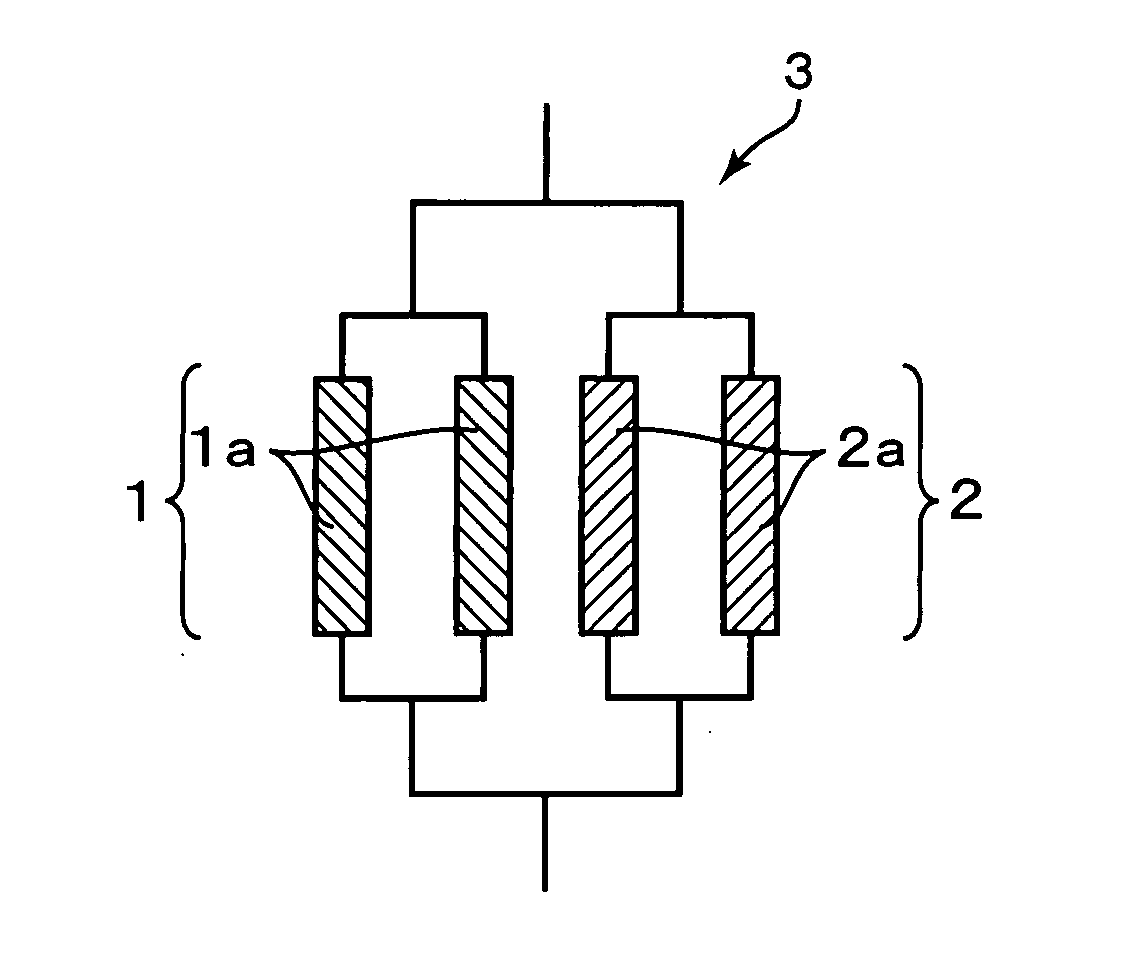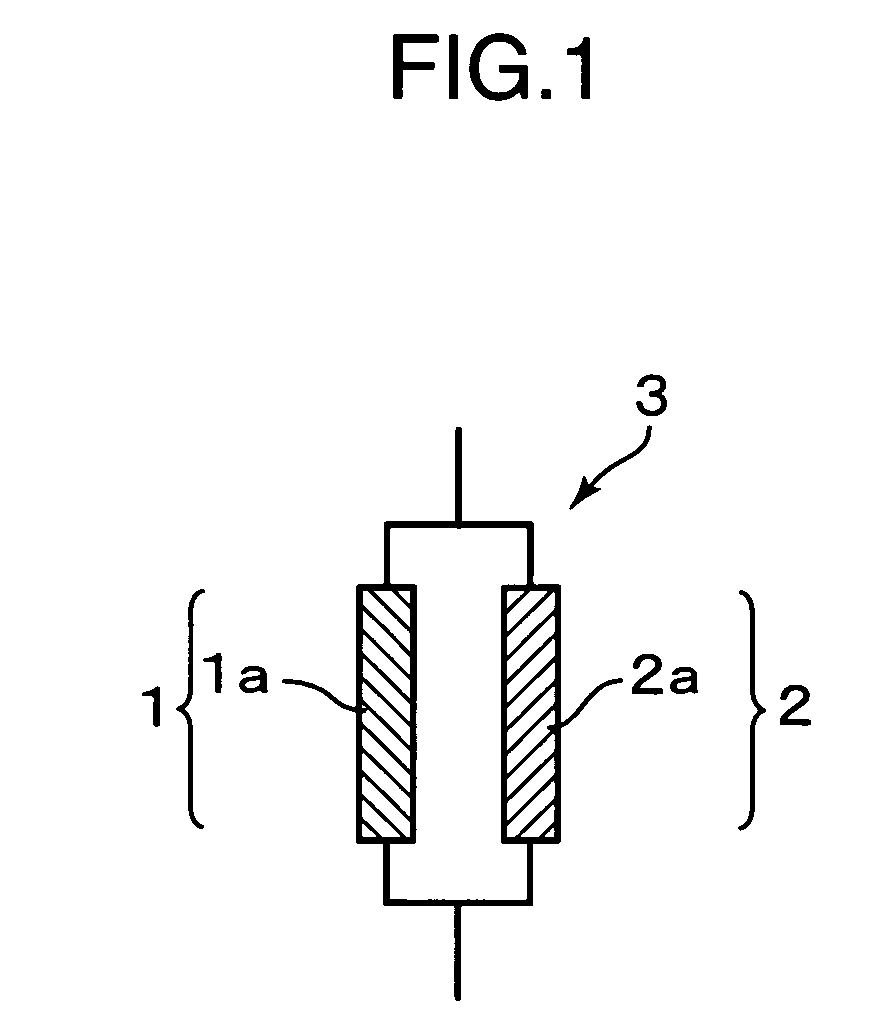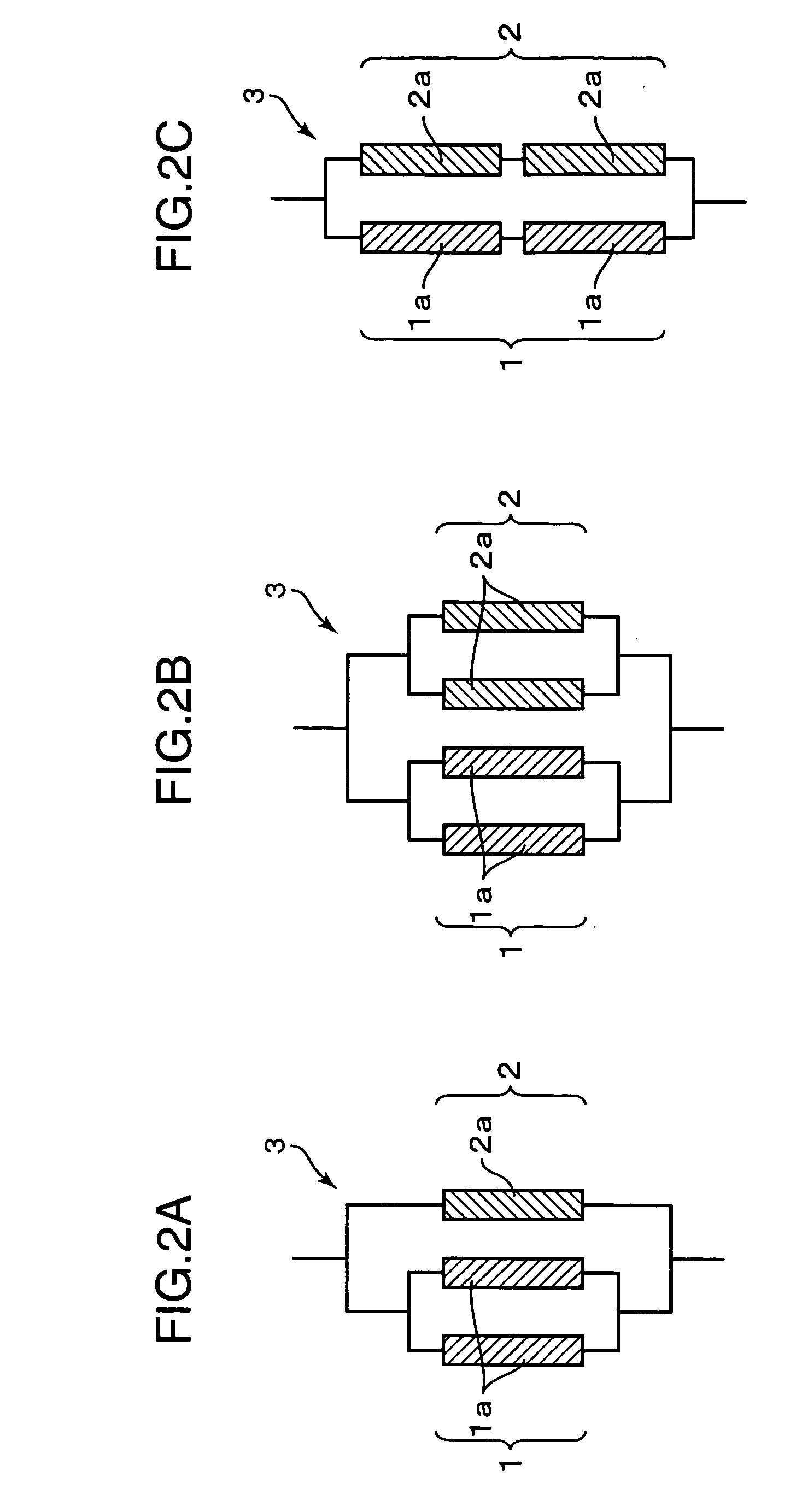Hybrid power supply unit
a power supply unit and hybrid technology, applied in the field of hybrid power supply units, can solve the problems of high power consumption, high-capacity nonaqueous electrolyte batteries are not suitable for high-load power supplies, and the difficulty of making batteries higher both in capacity and power,
- Summary
- Abstract
- Description
- Claims
- Application Information
AI Technical Summary
Benefits of technology
Problems solved by technology
Method used
Image
Examples
embodiment 1
[0016]FIG. 1 is a schematic view illustrating a hybrid power supply unit 3 in the present embodiment. The hybrid power supply unit 3 shown in FIG. 1 comprises a high-capacity nonaqueous electrolyte battery group 1 and a high-power nonaqueous electrolyte battery group 2 connected to each other in parallel, and each of the battery groups contains a cell, respectively nonaqueous electrolyte cells 1a and 2a.
[0017]The hybrid power supply unit in the present embodiment is characterized in that the nonaqueous electrolyte cell 1a in the high-capacity nonaqueous electrolyte battery group 1 and the nonaqueous electrolyte cell 2a in the high-power nonaqueous electrolyte battery group 2 are different in discharge characteristics from each other. Specifically, the hybrid power supply unit 3 is so designed that the nonaqueous electrolyte cell 1a has a discharge capacity at a low load of 0.2 C greater than that of the nonaqueous electrolyte cell 2a but the nonaqueous electrolyte cell 2a has a rat...
embodiment 2
[0033]In the hybrid power supply unit in the present embodiment, at least one of the high-capacity and high-power nonaqueous electrolyte battery groups may contain multiple nonaqueous electrolyte cells. FIGS. 2A to 2C are schematic views illustrating examples of the hybrid power supply unit in the present embodiment. The discharge characteristics and configuration, for example of electrodes, of each nonaqueous electrolyte cell for use in the present embodiment are the same as those for each nonaqueous electrolyte cell described in embodiment 1, and thus, repeated description thereof will be omitted, and only features different from those in embodiment 1 will be described herein.
[0034]FIG. 2A shows a hybrid power supply unit in which a high-capacity nonaqueous electrolyte battery group 1 contains two nonaqueous electrolyte cells 1a connected to each other in parallel and the high-capacity nonaqueous electrolyte battery group 1 is connected in parallel to a high-power nonaqueous elect...
example 1
[0052]A battery of one lithium-ion secondary cell A and a battery of one lithium-ion secondary cell F were connected to each other in parallel, to give a hybrid power supply unit.
PUM
| Property | Measurement | Unit |
|---|---|---|
| current density | aaaaa | aaaaa |
| current density | aaaaa | aaaaa |
| thicknesses | aaaaa | aaaaa |
Abstract
Description
Claims
Application Information
 Login to View More
Login to View More - R&D
- Intellectual Property
- Life Sciences
- Materials
- Tech Scout
- Unparalleled Data Quality
- Higher Quality Content
- 60% Fewer Hallucinations
Browse by: Latest US Patents, China's latest patents, Technical Efficacy Thesaurus, Application Domain, Technology Topic, Popular Technical Reports.
© 2025 PatSnap. All rights reserved.Legal|Privacy policy|Modern Slavery Act Transparency Statement|Sitemap|About US| Contact US: help@patsnap.com



